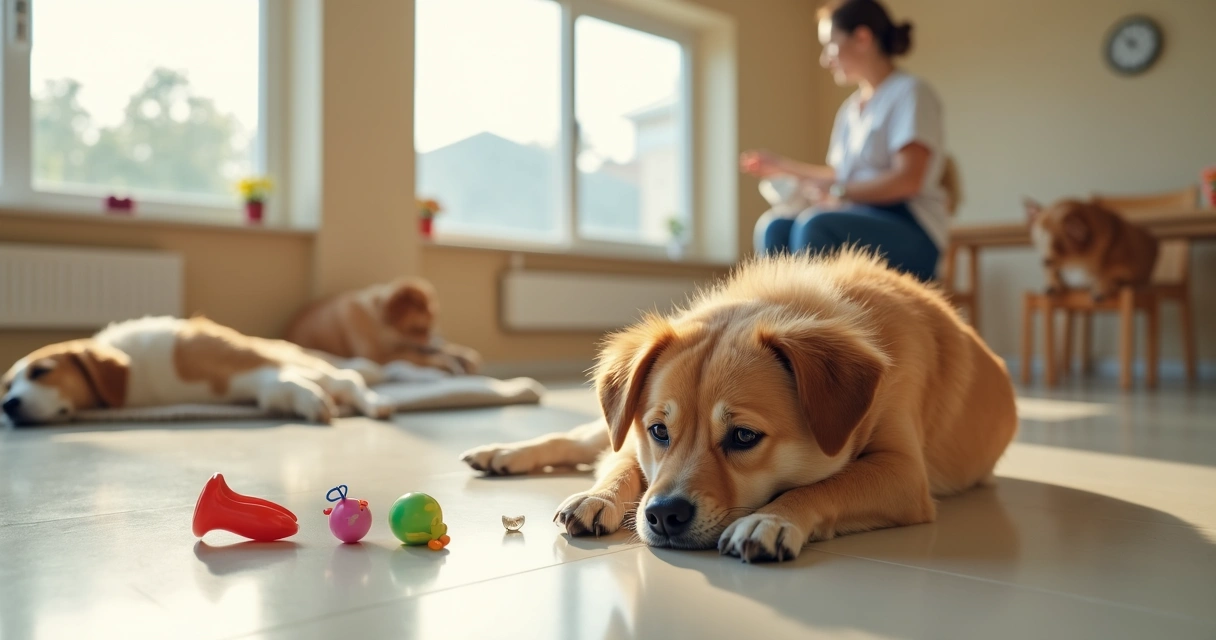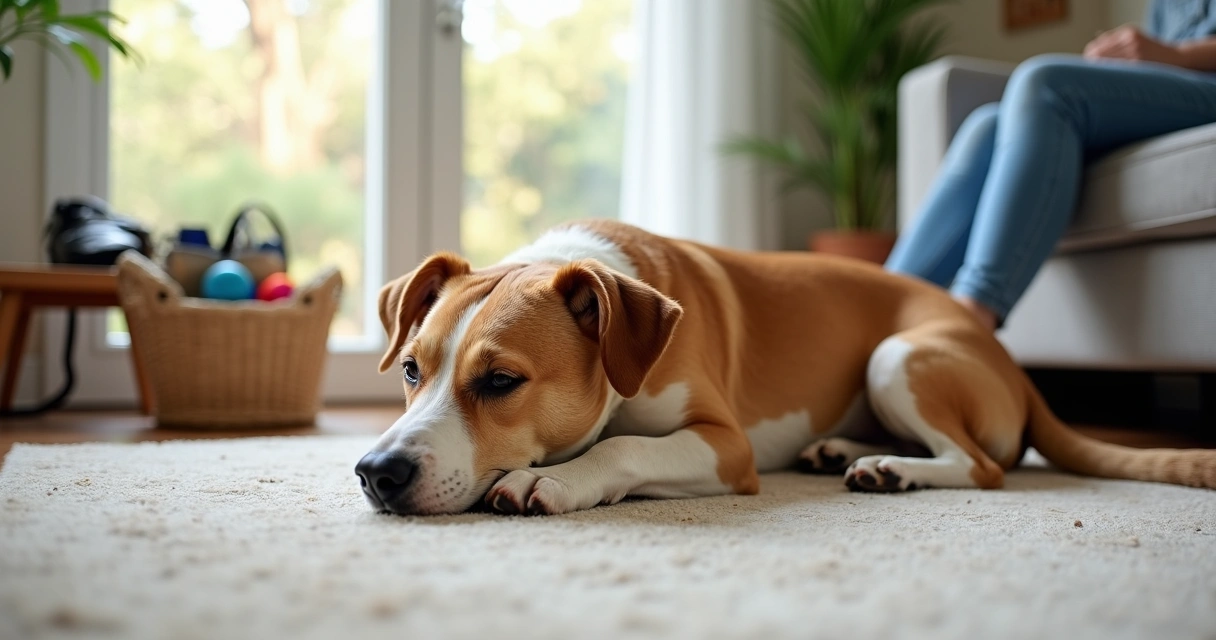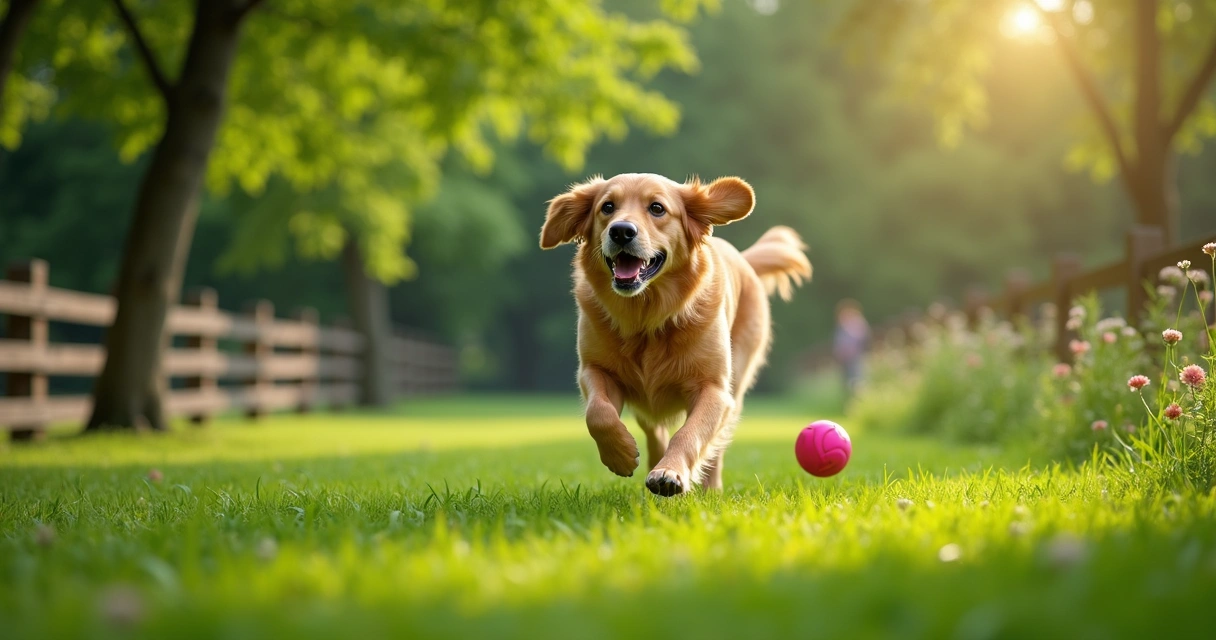Dog daycare can be wonderful. It gives your pet a place to let out their energy, socialize, and enjoy a day with friends instead of waiting alone at home. But, as with people, sometimes even the best routines start to wear thin or show cracks. Our pets, especially dogs, have subtle ways of showing when something isn’t quite right. Recognizing these signs early can mean the difference between a happy, healthy pup and one quietly struggling under the radar.
Dogtown, with its caring staff and engaging dog daycare programs, is built around personalizing the experience for every animal. Yet, each dog is unique. The signs that your dog needs an adjustment aren’t always loud or dramatic. Some are almost whispers.
Is your dog's daycare routine still working for them?
Personality shifts: your dog isn’t themselves
Some dogs bounce out of the car, eager for daycare. If your usually social or happy dog suddenly seems withdrawn, slow to join the group, or less eager to leave you at drop-off, that’s a quiet flag. Dogs often communicate discomfort or boredom through changes in mood or energy. Maybe your dog used to love greeting staff but now clings to you at pickup and drop-off. Is your energetic pup coming home unusually tired or, oddly, full of nervous energy?
- Reluctance to leave the car at drop-off
- Needing extra coaxing to enter the facility
- Still and silent instead of wiggly and excited
Some personality shifts might just be a “bad day,” but if you see a shift for several days, something may need a closer look.
Showing new or worsening stress signals
Stress in dogs can show in different ways—excessive yawning, licking lips, pacing, drooling, or panting when it’s not hot. Maybe your dog is trembling or hiding at drop-off. These signals are pretty clear: your dog’s not comfortable.
There’s strong research that structured activities and enrichment are, as the National Agricultural Library notes, important for animal welfare and behavioral health. If your dog seems more anxious than playful, it could mean their environment or schedule isn’t quite right.
Increase in aggressive or reactive behaviors
Has your vet or a staff member at daycare mentioned your dog is getting snappier with others or acting out in ways they never did before? Maybe your once social dog now gets tense around certain dogs or growls more often.
According to Frontiers in Veterinary Science research, stress and fear in high-activity settings can make dogs display more reactive or aggressive behaviors. Sometimes, a change in routine—like different playgroups, less rest, or overcrowding—can trigger those reactions.
If tension is replacing play, your dog's routine may need adjustment or more individualized supervision, such as the small-group environment Dogtown offers.
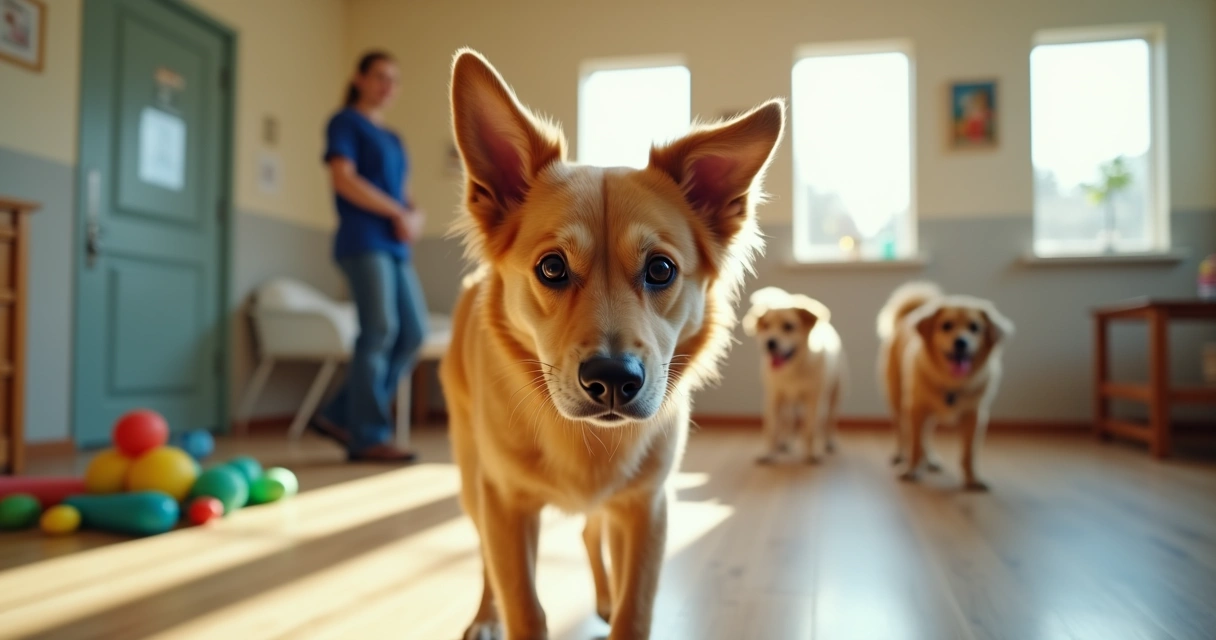
Sudden fatigue or hyperactivity at home
A tired dog after a day of activity is expected, but a dog that is constantly exhausted, grumpy, or irritable? That is a concern. On the other hand, if your dog comes home extra hyper, wound up, or even destructive, it can point toward too little constructive stimulation or perhaps too much downtime at daycare.
Sometimes, when a dog’s routine doesn't match their individual needs, their energy can show up in unpredictable ways. Maybe your dog is sleeping through dinner or, conversely, bouncing off the walls until midnight. That’s your cue.
Lack of interest in going to daycare
Has the morning excitement faded? Is your dog hiding when they see their leash instead of racing to the door? This lack of enthusiasm might be telling. While it’s natural for excitement to ebb and flow, a long-term downturn in interest suggests boredom or discomfort.
When the fun fades, dogs speak with their paws.
This can be a sign that your dog’s routine isn’t providing enough new experiences or social opportunities. It might be time to explore new packages, add-ons, or adjust visit schedules through services like Dogtown’s day camp program.
Regression in training or manners
Dogs thrive on consistency but also need challenge and positive reinforcement to keep growing. If your once well-mannered dog is suddenly jumping, mouthing, or even barking more (both at daycare or at home), something in their routine isn’t clicking.
Regression can happen if environments become too hectic or lack structure, or if old triggers resurface. Bringing in new enrichment, or mixing in focused one-on-one time (as seen in specialized training sessions), might be needed.
Physical signs: over-grooming, minor injuries, or changes in appearance
Sometimes, dogs react to stress or boredom physically. Licking paws obsessively, shedding more, or coming home with unexplained scratches can all be clues. Even minor grooming neglect like dull fur or matting hints your dog's not fully at ease.
Dogtown includes daily feedback and grooming add-ons like brushing and nail trims to monitor your pet’s well-being. If physical signs persist, a review of the routine may reveal what’s missing: more rest, different groupings, or even different activities.
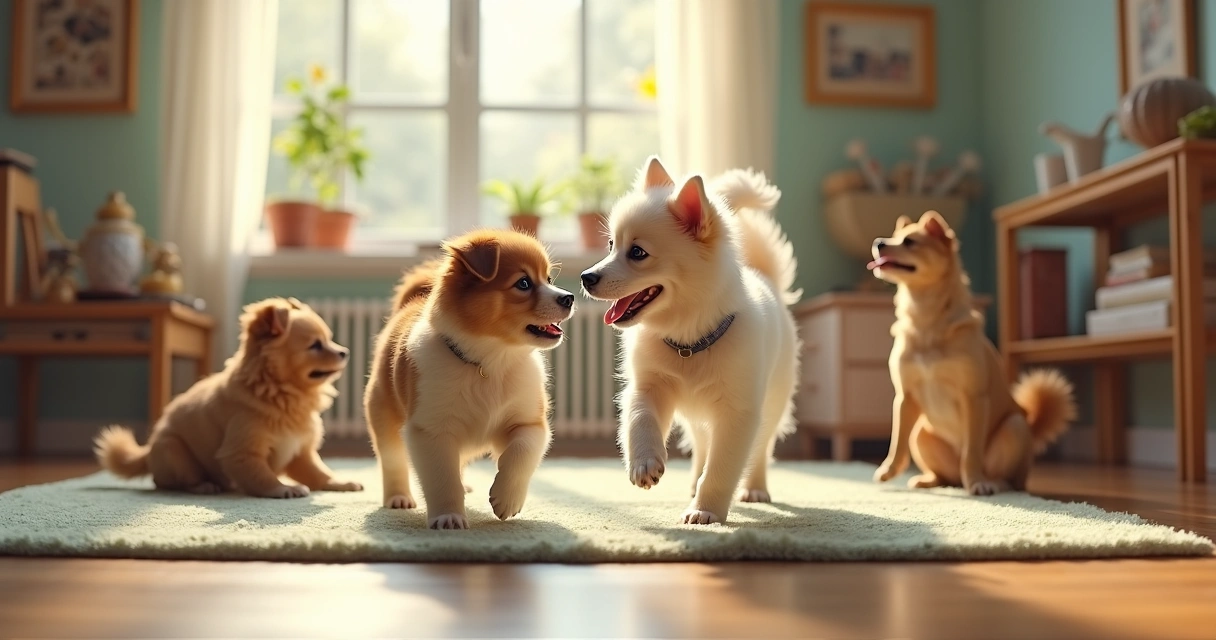
Health or coat changes tracked by staff
Long-term staff or regular caregivers will notice patterns the average pet parent might miss, like fluctuations in your dog’s weight, energy, or behavior over time. If staff, such as those at Dogtown, note changes in eating, sleeping, or health indicators, it’s worth listening. Sometimes it’s just a growth spurt (or a seasonal shift). Other times, it’s the subtle sign that routine tweaks are needed.
What to do if you notice signs
If you notice any of these flags, don’t panic. Sometimes, a new play group, a different open/quiet time balance, or an added daycare enrichment session makes all the difference. Talk to your pet care provider—especially if they offer individualized assessments and feedback, like Dogtown does with its free pre-enrollment evaluations. Quality daycare facilities will welcome your input and help shape the best plan for your dog’s unique needs.
Research shows that positive, structured human interaction and activities—like those crafted at Dogtown—help dogs show less stress and more joy, as demonstrated in peer-reviewed shelter dog studies. Step by step, little changes can bring back your dog’s spark.
Conclusion: small changes, happier dogs
There’s always room for improvement, even at the friendliest daycare. Our pets can’t always tell us directly what they need, but if you watch and listen, they’ll show you. If you’re seeing new stress, boredom, or physical changes, don’t wait—these are signs to adjust, not abandon, a daycare routine.
Dogtown in Gloucester, MA is committed to personalized pet care, adjusting routines, enrichment, and supervision with your pet’s happiness in mind. Take the next step for your dog’s well-being. Schedule a free pre-enrollment assessment or browse flexible boarding packages to see how small adjustments today can bring long-term joy tomorrow.
Frequently asked questions
What are signs my dog hates daycare?
Common signs include reluctance to enter the facility, hiding at drop-off, tail tucked between legs, excessive yawning or lip-licking, and withdrawing from staff or other dogs. Some dogs bark anxiously or become reactive when you try to leave. You might also notice your dog is unusually tired, irritable, or even physically ill after daycare. These are all signals that the daycare environment or routine may not fit your dog’s needs anymore.
How to know if daycare is stressful?
Stress in daycare shows up as panting, drooling, shaking, hiding, or even aggression. A consistently stressed dog might regress in training or become less social. For some, physical symptoms like over-grooming, diarrhea, or changes in weight appear over time. According to studies on shelter dog stress, human interaction and environmental enrichment can help lower stress. If you see multiple signs of distress, it’s time to reassess your dog’s daycare routine.
Is it worth switching dog daycares?
If your dog is regularly showing signs of discomfort or unhappiness—despite small routine adjustments—switching to a daycare with more individualized care or different enrichment options can help. Environments that do pre-enrollment assessments and maintain smaller play groups, like Dogtown, are more likely to find a good fit for your dog’s unique needs. It’s ok to try different options until you find what works best for your dog.
What are alternatives to dog daycare?
Alternatives may include hiring a dog walker, playdates with a few trusted dogs, training sessions, or even a stay at a structured boarding facility that offers enrichment and supervised play, such as those found at Dogtown. Some owners arrange for midday home visits or explore training classes to provide balanced socialization and exercise.
How can I improve my dog's daycare routine?
Talk to your daycare staff about your dog’s changing behaviors or needs. Ask about adding new enrichment activities, changing playgroups, or incorporating grooming services from Dogtown’s grooming program. Even small changes, like adjusting pick-up times or mixing solo and group activities, can make a big difference. And always schedule a reassessment if something feels off—personalized attention helps every pet get more joy out of daycare.


